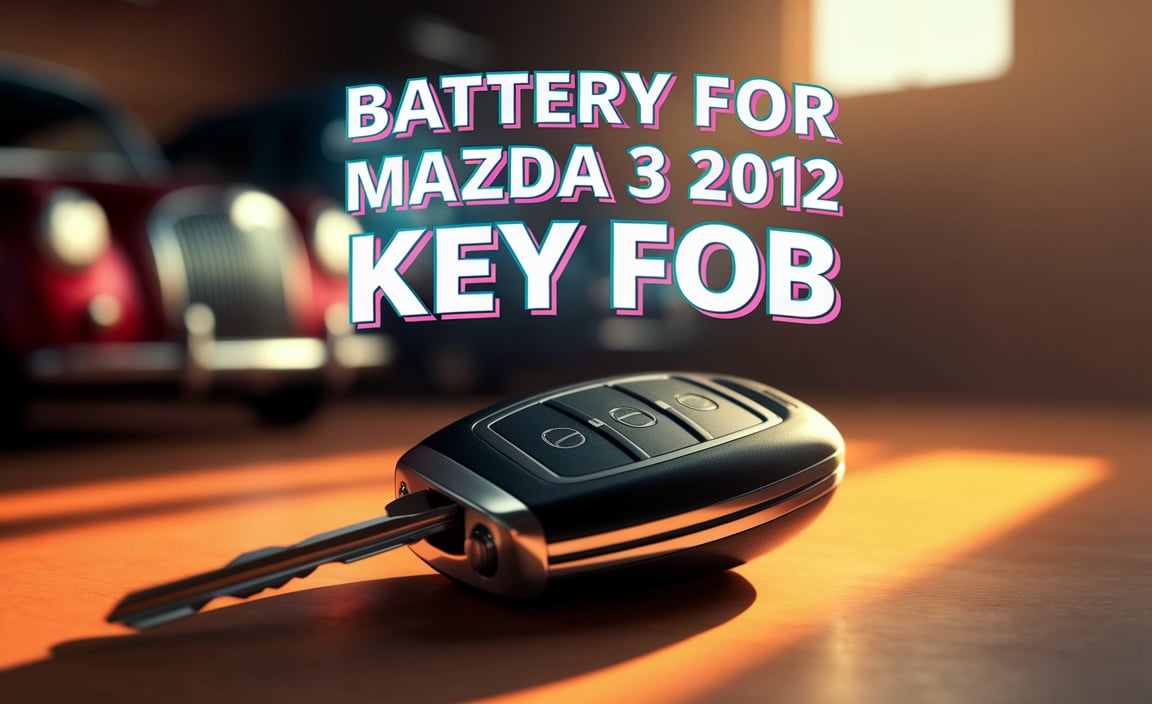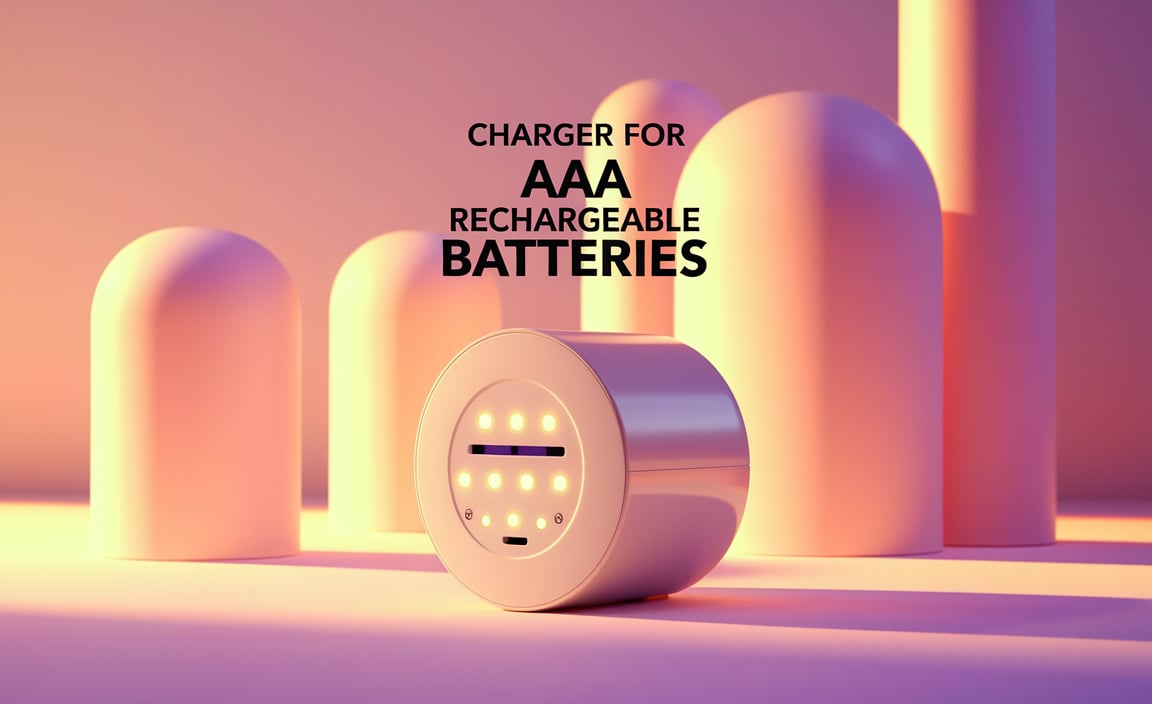Quick Summary: Choosing the right 12V car battery for off-road adventures means looking beyond standard options. Focus on deep-cycle capabilities, higher reserve capacity (RC), and robust construction to handle vibrations and demanding power needs. Compare brands and types like AGM or Gel for reliability on tough terrain.
Off-Road Ready: Your Guide to Comparing 12V Car Batteries
Heading off the beaten path can be an incredible experience, but it also puts a lot of strain on your vehicle, especially its battery. A standard car battery might get you around town just fine, but when you’re miles from anywhere, relying on accessories like winches, auxiliary lights, or fridges, the wrong battery can leave you stranded. Don’t let a weak battery cut your adventure short! This guide is here to help you understand and compare 12V car batteries specifically for off-road use, ensuring you have the power you need, when you need it.
We’ll walk through exactly what makes an off-road battery different and what features matter most. By the end, you’ll feel confident picking the perfect battery to power your next expedition, so you can focus on the journey ahead, not worrying about your power source.
Why Off-Road Demands More from Your Car Battery
Think of your car battery as the heart of your vehicle’s electrical system. For daily driving, it mainly needs to start the engine and power basic electronics like headlights and the radio. But off-roading? That’s a whole different ballgame.
Off-road vehicles often run accessories for much longer periods without the engine running. Imagine running a fridge to keep your food cool or using powerful LED lights for early morning starts and late-night camps. These devices draw significant power, draining a standard battery quickly. Plus, the constant jarring and vibrations from rough terrain can be tough on any component, especially one as sensitive as a battery.
A typical car battery, often called a “starting battery,” is designed to deliver a massive burst of power for a short time – just enough to crank the engine over. It’s not built to be drained and recharged repeatedly, which is exactly what happens when you use accessories off-road. You need a battery that can handle deep discharges and recharge efficiently, all while shaking off the bumps and jolts of the trail.
Key Differences: Starting Batteries vs. Deep-Cycle Batteries
This is the most crucial distinction when looking for an off-road capable battery.
Starting Batteries
- Purpose: Designed for short, high-current bursts to start the engine.
- Construction: Features thinner plates packed closely together to maximize surface area for quick power delivery.
- Performance: Excellent at starting but can be damaged by frequent deep discharges. Running accessories for extended periods will significantly shorten their lifespan.
- Best For: Everyday driving where the primary need is engine starting.
Deep-Cycle Batteries
- Purpose: Built to provide a steady amount of power for a long time and to withstand repeated deep discharges.
- Construction: Uses thicker, more robust plates that are less susceptible to damage from being drained.
- Performance: Can be discharged to a much lower state (e.g., 50% or even 80% for some types) without significant harm, then recharged. They deliver power more slowly but for much longer.
- Best For: RVs, boats, golf carts, and crucial for off-road power needs where accessories are used extensively.
For off-road use, a deep-cycle battery is almost always the superior choice. Some batteries are designed as “dual-purpose,” offering a balance between starting and deep-cycle capabilities, which can be a good compromise if you don’t plan on extreme deep cycling but still need more than a standard starting battery.
Essential Features to Compare in an Off-Road 12V Battery
When you start comparing, you’ll see a lot of technical terms. Let’s break down the most important ones for off-road applications:
| Feature | What it Means for Off-Road | Why it Matters |
|---|---|---|
| Battery Type (e.g., Flooded Lead-Acid, AGM, Gel) | Determines how the battery stores and delivers power, its maintenance needs, and tolerance to vibration. | Affects durability, performance in different conditions, and safety. AGM and Gel are generally better for vibration. |
| Reserve Capacity (RC) | The number of minutes a fully charged battery can deliver 25 amps at 80°F (27°C) before dropping below 10.5 volts. | Higher RC means your battery can power accessories longer without the engine running. Crucial for extended accessory use. |
| Cold Cranking Amps (CCA) | The number of amps a battery can deliver at 0°F (-18°C) for 30 seconds while maintaining at least 7.2 volts. | Essential for starting your engine in colder climates. Still important off-road if you encounter cold weather, but often less critical than RC for accessory power. |
| Amplified Hours (Ah) | Measures the battery’s total energy storage capacity. A 100Ah battery can theoretically deliver 10 amps for 10 hours or 1 amp for 100 hours. | Indicates overall power availability. Higher Ah ratings mean more power for longer periods. |
| Construction & Durability | How well the battery is built to withstand physical shock, vibration, and extreme temperatures. | Off-road terrain is rough. A robust casing and internal construction prevent damage and leakage, ensuring reliable performance and safety. |
| Maintenance Requirements | Whether the battery needs regular checking and topping up of water (flooded) or is sealed (AGM, Gel). | Sealed batteries (AGM, Gel) are generally maintenance-free and safer for off-road as they are less likely to leak. |
Exploring Different Battery Technologies for Off-Road
Not all 12V batteries are created equal. The type of technology used significantly impacts performance, especially off-road.
1. Flooded Lead-Acid Batteries (Wet Cell)
These are the most common and often the most affordable type of car battery. They contain lead plates submerged in an electrolyte solution of sulfuric acid and water. You’ll often see them with removable caps for checking and topping up the water levels.
- Pros: Lower upfront cost, widely available, good starting power.
- Cons: Require maintenance (topping up water), can be sensitive to vibration and deep discharges, can leak acid if tipped, produce gassing (needs ventilation), less durable for rough off-road conditions.
- Off-Road Verdict: Generally not recommended for demanding off-road use due to maintenance and durability issues. Fine for light trails or if budget is a primary concern, but proceed with caution.
2. Absorbed Glass Mat (AGM) Batteries
AGM batteries are a type of sealed lead-acid battery. The electrolyte is absorbed into thin fiberglass mats sandwiched between the lead plates. This makes them spill-proof, maintenance-free, and much more resistant to vibration.
- Pros: Excellent vibration resistance, spill-proof and leak-proof, maintenance-free, faster charging than flooded batteries, can handle deeper discharges better than flooded types, lower internal resistance allows for higher current output and better heat dissipation.
- Cons: Higher upfront cost than flooded batteries, can be sensitive to overcharging (requires a compatible charger).
- Off-Road Verdict: A top choice for off-road enthusiasts. Their durability, low maintenance, and good deep-cycle performance make them ideal for rugged conditions and powering accessories. Many modern vehicles with start-stop technology use AGM batteries.
3. Gel Batteries
Another type of sealed lead-acid battery, gel batteries use a gelled electrolyte. The electrolyte is thickened with fumed silica, making it a semi-solid substance. Similar to AGMs, they are spill-proof and maintenance-free.
- Pros: Very deep discharge capabilities, excellent at preventing stratification (where acid settles), good vibration resistance, spill-proof.
- Cons: Generally have lower cranking power than AGMs or flooded, can be more sensitive to overcharging, can be more expensive, slower charging.
- Off-Road Verdict: Good for applications where deep cycling is the primary concern and starting power is secondary. Less common for primary vehicle starting off-road compared to AGMs, but can be excellent as a secondary battery.
4. Lithium-ion Batteries (e.g., LiFePO4)
While not traditionally a “car battery” in the same sense, Lithium Iron Phosphate (LiFePO4) batteries are gaining traction for auxiliary power systems off-road. They offer incredible energy density and a very long lifespan.
- Pros: Significantly lighter than lead-acid batteries, can be deeply discharged without damage, very long cycle life, high energy density.
- Cons: Very high upfront cost, require a Battery Management System (BMS) for safety and performance, charging can be slower in very cold temperatures (though many have built-in heaters or BMS cutoffs), not typically used as a primary starting battery due to cost and cold-weather performance unless specifically designed for it.
- Off-Road Verdict: Excellent for auxiliary power banks or house batteries in campers and expedition vehicles. For a primary starting battery, the cost and cold-weather performance considerations make them less common than AGMs.
Choosing the Right Specs: RC, Ah, and CCA
Once you’ve decided on a battery type (likely AGM for best all-around off-road performance), you need to pick the right specifications.
Reserve Capacity (RC) is King for Accessories
If you’re running lights, a fridge, an inverter, or sound systems off-road, Reserve Capacity (RC) is often more important than Cold Cranking Amps (CCA). Why? Because you’ll be drawing power with the engine off. A higher RC rating means your battery can sustain these accessories for a longer period. Aim for an RC of 120 minutes or higher if you plan on heavy accessory use.
Amplified Hours (Ah) for Total Power
Amplified Hours (Ah) tells you the total amount of energy the battery can store. A battery with a higher Ah rating will simply hold more energy. For an off-road setup, you’ll want to compare this to your estimated daily power draw from accessories. A common range for a good off-road battery seeking deep-cycle capability would be anywhere from 70Ah to over 150Ah, depending on your power needs.
Cold Cranking Amps (CCA) for Starting Power
Don’t completely ignore CCA, especially if you frequently drive in colder climates or have a larger engine that’s harder to start. Check your vehicle manufacturer’s recommendation for the minimum CCA required. For off-road, a battery that meets or slightly exceeds this recommendation is generally sufficient, especially if you’re opting for a deep-cycle or dual-purpose battery.
A Balancing Act: Dual-Purpose Batteries
Some batteries are marketed as “dual-purpose.” These try to offer a good blend of starting power (higher CCA) and deep-cycle capability (decent RC and Ah). They can be a practical option if you want one battery to handle everything and don’t plan on extremely deep discharges regularly.
Popular Brands and What to Look For
Several reputable brands offer batteries suitable for off-road use. When comparing, look beyond just the price tag. Consider the warranty, brand reputation, and customer reviews, especially from other off-roaders.
Some well-regarded brands include:
- Odyssey: Known for their high-performance AGM batteries with excellent vibration resistance and deep-cycle capabilities. Often considered premium.
- Optima: Features their unique spiral-cell technology in AGM batteries, offering strong vibration resistance and good deep-cycle performance.
- Shorai & Antigravity (Lithium): Leading manufacturers of lightweight and powerful LiFePO4 batteries, ideal for auxiliary power or performance builds.
- NorthStar: Offers powerful AGM batteries, often with high cranking amps and good reserve capacity.
- DieHard, ACDelco, Interstate: These brands offer a range of batteries, including some AGM and deep-cycle options that can be suitable for less extreme off-road use or as dual-purpose batteries. Always check the specifications for deep-cycle capability.
When comparing, download the spec sheets for batteries you are interested in. Look for the detailed RC, Ah, and CCA figures, as well as the warranty terms.
Installation and Safety First!
Replacing a car battery might seem daunting, but with the right precautions, it’s a manageable DIY task. Safety is paramount, as car batteries contain corrosive acid and can produce explosive gases.
Tools You’ll Likely Need:
- Wrench set (often 10mm, 13mm, or 1/2 inch for terminals and hold-down clamps)
- Wire brush or battery terminal cleaner
- Gloves (acid-resistant)
- Safety glasses
- Battery terminal protector spray or grease
- Towel or shop rags
Step-by-Step Battery Replacement:
- Park and Power Down: Ensure your vehicle is parked on a level surface, the engine is off, and the keys are out of the ignition. Turn off all accessories.
- Locate the Battery: Pop the hood and find your battery. It’s usually on one side of the engine bay.
- Disconnect the Negative Terminal FIRST: This is crucial for safety! Use your wrench to loosen the nut on the clamp connected to the negative (-) terminal (usually black). Twist and lift the cable off the terminal. Tuck it away so it can’t accidentally touch the battery post.
- Disconnect the Positive Terminal: Now, loosen the nut on the positive (+) terminal (usually red). Twist and lift this cable off the terminal.
- Remove the Hold-Down Clamp: Batteries are secured by a bracket or clamp at the base or top. Remove the nuts or bolts holding this in place. Keep track of these small parts!
- Lift Out the Old Battery: Batteries are heavy! Lift with your legs, not your back. If it’s too heavy, ask for help or consider a battery carrier. Note the orientation of the terminals on the old battery so you know how to position the new one.
- Clean the Tray and Terminals: Use your wire brush to clean any corrosion from the battery tray and the cable clamps. A clean connection is vital for good power flow.
- Place the New Battery: Carefully lower the new battery into the tray, ensuring it’s oriented correctly (positive and negative terminals in the same position as the old one).
- Secure the Hold-Down Clamp: Reinstall and tighten the hold-down clamp to keep the battery firmly in place. You don’t want it moving on rough terrain.
- Connect the Positive Terminal FIRST: Place the positive (+) cable clamp onto the positive terminal and tighten the nut securely.
- Connect the Negative Terminal LAST: Place the negative (-) cable clamp onto the negative terminal and tighten it.
- Apply Terminal Protector: Spray or apply grease to the terminals to prevent corrosion.
- Start Your Vehicle: Start your engine. You may need to reset your clock or radio presets.
Important Note: Some modern vehicles have sophisticated electronic systems that might require a memory saver tool during battery replacement to prevent loss of settings. Consult your vehicle’s owner’s manual or a professional if you are unsure.
For more detailed instructions and visuals, refer to a reputable automotive resource like Haynes manuals or YouTube tutorials specific to your vehicle make and model. The U.S. Department of Energy’s FuelEconomy.gov also offers general vehicle maintenance tips.
Comparing Battery Costs: Initial Investment vs. Long-Term Value
The price of a 12V car battery can vary wildly, from under $100 for a basic flooded battery to over $400 for a high-end AGM or lithium variant.
- Flooded Lead-Acid: Lowest upfront cost. However, their shorter lifespan and potential damage from off-road conditions can lead to more frequent replacements, increasing long-term cost. They also require more careful handling due to potential leakage and gassing.
- AGM Batteries: More expensive than flooded, but their superior durability, resistance to vibration, and deeper discharge capabilities generally provide better long-term value for off-road use. They are maintenance-free and safer.
- Gel Batteries: Similar price point to AGMs, sometimes higher. Their niche is deep cycling, so if that’s your main priority





